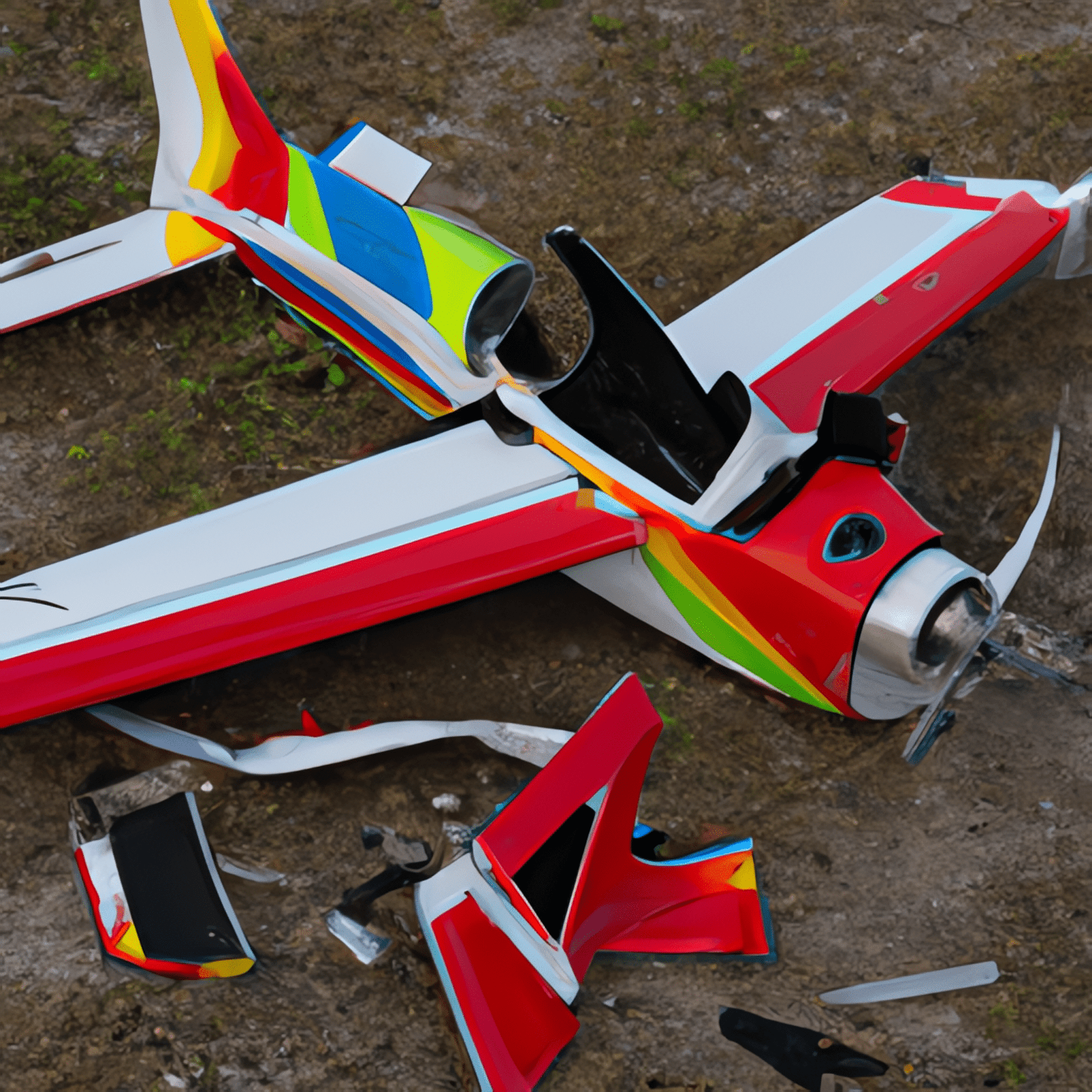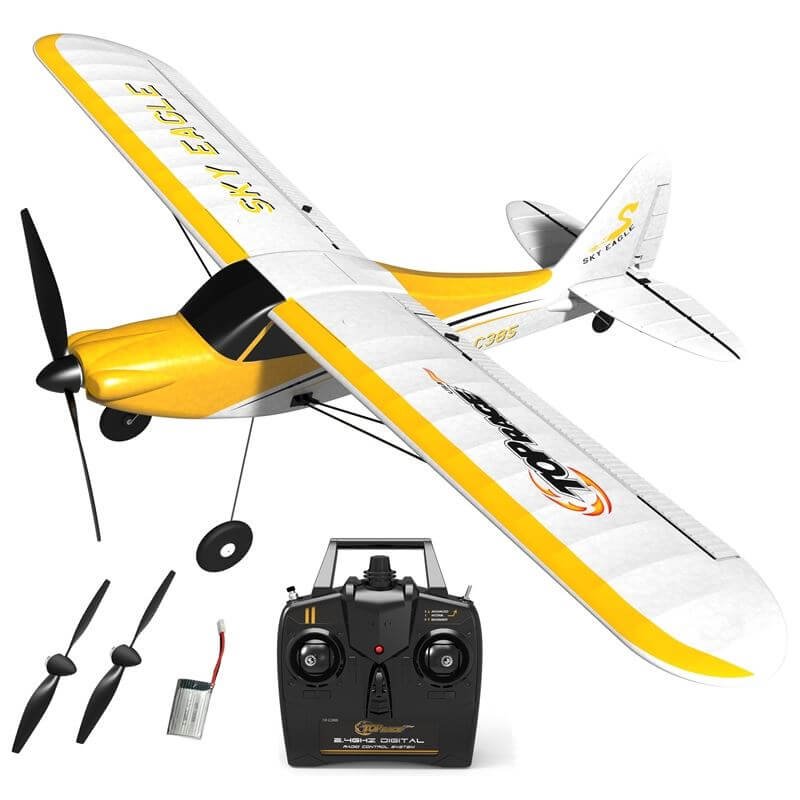How long will an electric RC car run? You know how it is – you’re just getting the hang of controlling your new rc car, and keeping it in a straight line, when phut….. the battery dies. Then there’s the interminable wait until it recharges. So, it’s useful to know how long will your electric rc car run, and any ways to extend the battery’s life. Read on below to find out more…
An electric RC car will run for between 15 and 30 minutes usually, depending on the type of battery, its capacity, and its voltage, as well as other factors, such as the type of motor, the temperature of the air, the surface across which the car is driven, and your driving style.
So, there a lot of variables, but the battery is the main thing in determining how long an electric RC car will run. But which type of battery is the best for long run times? Find out below…
Do you need a license to race an RC car? Find out here
- What Type Of Battery Do I Need For My RC Car?
- Which Things Affect How Long An Electric RC Car Will Run?
- In Conclusion
What Type Of Battery Do I Need For My RC Car?
The biggest influence on how long an electric RC car will run is the battery, or battery pack. Battery discussions can get pretty technical and for those of us who just want to get out there and drive, a little too involved, so I’m going to do my best to keep it simple. Anyway, read on below to find out which batteries are best for longer running.
You’ll need either a Nickel-Metal Hydride (NiMH) or Lithium Polymer (LiPo) battery to power your RC car – these are the most popular batteries. They both have pros and cons, but in general, the NiMH battery is cheaper but doesn’t have the staying power of the more expensive LiPo battery.
If you’re a novice, you’ll probably be buying an RC car off the shelf with the battery already fitted. In some cases, this is not easily interchangeable, so you’ll be stuck with what comes with the car.
However, as you progress you’ll get opportunities to choose the type of battery to use, so here’s a little more detail about each of these battery types, in layman’s terms. The type of battery you have will have a big influence on how far your RC car goes.
Very basically, the bigger the capacity of the battery (measured in milli amp hours, or mAh), the longer it will go on one charge. RC batteries come in a range of sizes; popular ones are from 2000 mAh to over 12000 mAh. The bigger the capacity, generally, the more you’ll pay (although there are exceptions).
There are two popular types of battery for RC models: the NiMH and the LiPo. Read more about these (in layman’s terms!) below:
What Is A Nickel-Metal Hydride (NiMH) Battery?
NiMH batteries are similar to those we use in TV remotes, and for RC cars, come in Packs of 6 or 8, held together with a plastic coating. If you buy a ready to run car off the shelf, it’s likely to be charged by a NiMH battery pack.
Here’s a typical, high rated, NiMH battery pack for a wide range of rc models, including Traxxas (not 1/16 Slash) – the Flylinktech 2 Pack 7.2V 5000mAh NiMH RC Car Rechargeable Batteries ( for more detail on these, click on the image:

Pros of a NiMH Battery Pack
- Cheaper
- Easier To Use
- Take A Lot Of Abuse
- No Need To Be Too Careful With Them
Cons of a NiMH Battery Pack
- Heavier than LiPo
- Power decreases steadily as the car is driven, so car gets slower
- Lasts about 15 minutes on a full charge
What Is A Lithium Polymer (LiPo) Battery?
LiPo batteries are usually supplied only with more expensive ready to run RC models, and more often are bought separately and fitted to a home build or as an upgrade. They’re more trouble to look after properly, but have significant advantages over NiMH batteries, and as such, they are much more popular among the experienced RC car hobbyists, and particularly those involved in race meets.
A high powered, highly rated, longer run time LiPo battery pack for a wide range of model types (but check if it is suitable for yours) is the Zeee Lipo Battery 7.4V 100C 8000mAh. Zee is a good quality manufacturer, and this particular battery is an “Amazon choice”. Click on the image for more detail:

Pros of a LiPo Battery
- Lighter than an equivalent NiMH battery
- Can provide much more power than the equivalent MiMH battery
- Maintains its power longer, and in a steady state – then power drops quickly as the battery depletes its charge
- Lasts about 30 minutes on a full charge on average, but some of the bigger capacity ones can last up to 2 hours
- LiPo batteries usually have a longer life than NiHM before they need replacing
Cons of a LiPo Battery
- More expensive than an equivalent NiMH
- Trickier to maintain properly
- Can explode if not charged and handled correctly (though we’re not talking major explosion, it can cause a fire)
The critical thing about LiPo batteries is that care is taken in charging and storing them to avoid any danger associated with fires, or even more dramatically, explosions. The charger used should be the correct one, and the settings be appropriate to the specific battery being charged.
Do you want to make your rc car go faster? Check out easy ways of doing that, here.
Which Things Affect How Long An Electric RC Car Will Run?
If you’re trying to find out how long will an electric car run, you’ll need to look at a range of factors to get a sensible answer. By identifying which things affect the run time of electric rc cars, you’ll be able to improve how long they will keep going, and also their performance.
How The RC Car Is Driven
One sure fire way of depleting your battery quickly is to drive in a stop – go fashion, accelerating quickly, then braking hard.
Much better is to drive smoothly, with gentle acceleration and smooth braking, anticipating cornering and avoiding harsh movements. The overall effect will not only save battery charge, but also result in an increase in speed as measure around a circuit.
This is probably the easiest tip to implement.
Here’s another illustration of this tip by Driftomaniacs. Again, watch the highlights:
Battery Capacity
One of the main things which affect the run time is the battery. For the longest lasting battery per charge, choose the one with the biggest capacity.
The Battery’s capacity is measured in Milli Ampere Hour (mAh), and will be shown on both NiMH and LiPo batteries.
The other main figure to be aware of on a battery pack is “Volts”. The voltage determines how much speed and power your model will deliver.
Is The Battery Fully Charged?
To get the most time out of your batteries per charge, make sure you have them fully, or nearly fully charged before use.
The key thing is to make sure you get the correct charger for the type of battery you have ie a NiMH or LiPo charger. Chargers which serve both types of battery are also available. Failing to get the right one will at best ruin your batteries and at worst burn your garage down!
A good choice is a multi battery charger which automatically monitors and adjusts the charge. It will safely recharge both NiMH and Lipo batteries. One such charger which is highly rated by its users and is an “Amazon Choice” product is the Tenergy TB6-B Balance Charger, shown below. For more detail, click on the image:

Even with the correct charger, you’d be best advised not leave them charging on their own, at least for any longer than a short while, or better still charge them on a safe surface, or place.
Never charge the batteries unattended. Use a safe surface to charge your batteries on that in the event of explosion, no damage will happen. Charging bags are available which limit any surrounding damage should the batteries catch fire or explode. One such bage, which is very highly rated by its users, is the HOBBYMATE Lipo Safe Bag, shown below. Click on the name or image for more information:

You may notice rarely that a battery pack swells up when you’re charging it. If so, don’t try and deflate or puncture it – leave it aside, and dispose of it safely later when it’s cooled down. It will be unusable.
The speed of charging is also important. Charge the pack too quickly, and it may reduce its life, or worse still cause it to get hot and even catch fire. Modern chargers have in built safety features to prevent such occurences.
The following detail is taken from “The Battery University” (https://batteryuniversity.com)
Simple Guidelines for Charging Nickel-based Batteries
- The charge efficiency of nickel-based is close to 100 percent up to 70 percent charge. The pack remains cool but it begins to warm up with decreased efficiency towards full charge.
- Nickel-based batteries must cool down on trickle charge. If warm, trickle charge is too high.
- Consumer chargers do not always terminate the charge correctly. Remove the batteries when warm to the touch. Discontinue using a charger that “cooks” batteries.
- Charge at room temperature. Do not charge when hot or at freezing temperatures.
- Nickel-based batteries are best fast charged; a lingering slow charge causes “memory.”
- Nickel- and lithium-based batteries require different charge algorithms. A NiMH charger can also charge NiCd; a NiCd charger would overcharge NiMH.
- Do not leave a nickel-based battery in the charger for more than a few days. If possible, remove the packs and apply a brief charge before use.
Simple Guidelines for Charging Lithium-based Batteries
- Turn off the device or disconnect the load on charge to allow the current to drop unhindered during saturation.
- Charge at a moderate temperature. Do not charge at freezing temperature.
- Lithium-ion does not need to be fully charged; a partial charge is better.
- Not all chargers apply a full topping charge and the battery may not be fully charged when the “ready” signal appears; a 100 percent charge on a fuel gauge may be a lie.
- Discontinue using charger and/or battery if the battery gets excessively warm.
- Apply some charge to an empty battery before storing
To calculate the charging time in hours, divide the mAh rating (ie its capacity) by the charger’s output in mA. You would then add 10% to 30 % for any losses due to charging.
For example, if you have a 1000 mAh battery and a charger which outputs at 100 mA you would need to charge it for 13 hours. (ie 1000 / 100 =10 x 1.3)
Battery Temperature
The battery temperature is a critical factor in determining how long your battery charge lasts, and therefore how long your car will run for.
Winter temperatures will make the battery deplete more quickly, so try and store battery packs at room temperature wherever possible.
If the temperature gets too high, the battery’s life might be reduced.
How Old Is The Battery Pack?
Another factor which will affect how long an electric rc car will run is the age of the battery. Rechargeable batteries, like NiMH and LiPo’s, have a “lifespan” which is measured in the number of recharging cycles. This is defined as fully discharged to fully charged back to fully discharged.
This is often quoted as 300 – 500 cycles for both NiMH and LiPo batteries, but will depend on a host of factors, including how well it’s looked after, in charging, use and storage.
There is also a time effect. After a period of time – it could be as little as a couple of years – the battery will begin to deteriorate, whether you’ve been using it or not.
Proper winter storage is also important – get it wrong and it will undoubtedly shorten the life of your batteries. A good option is to buy a charger with a storage setting, which will provide a trickle charge to the batteries over an extended period, keeping them at an optimum charged level.
As we saw earlier, there are many factors which affect the lifespan of the battery, over and above its in built obsolesence. These include the type of battery, the way its been charged, and how its been stored.
So, to increase the run time of your RC car, make sure the battery pack is in good condition and not too old. If in doubt, invest in a new one!
Reduce The Weight Of The RC Car
Another way to make your RC car run further is to reduce its weight. This will have the added advantage of increasing the car’s speed. There are lots of ways of doing this, but if you’re a beginner like me you may feel daunted by the prospect of taking bits off your RTR car.
You would be surprised by how much of the car is made up of plastic and metal which serves no useful purpose other than to make the car look good. It often comes down to a trade-off between speed / run time and it looking like the real thing.
The easiest and quickest way of doing this is to look for plastic bits on the outside of the car which can be easily removed with a knife or small hacksaw, such as the fenders.
Pause here for a second though – I, for one, am not keen on ruining the look of a car just to get a marginal increase in battery life and speed. The aesthetics of the car are important to me and I would be reluctant to spoil them.
I would rather keep the outside of the car intact, and look inside for opportunities to cut weight. Look for any significant bits of plastic which aren’t structural and trim these or cut holes which don’t affect the strength of the plastic. BE VERY CAREFUL! – you may end up ruining your beloved model, so get advice if you don’t know exactly what you’re doing.
Here’s a clip of a video illustrating this overall approach (with thanks to Driftomaniacs https://www.facebook.com/Driftomaniacs/)
If you are very serious about reducing the weight of your RC car, you could consider replacing many of the internal parts with aluminium or even carbon fibre parts, but it could get very expensive!
You can also lighten your RC car by changing the type of batteries. By changing Ni-Mh batteries to a Li-Po pack, it should significantly reduce the weight of your car, as well as extending the run time.
Brushed or Brushless Motor?
Now if you’re really getting serious about increasing the run time of your RC car, you need to be looking at the type of motor you have. Most cheaper RTR cars off the shelf have a brushed motor, which are usually inefficient as they convert a lot of power by converting it to heat.
A more efficient arrangement is to install a brushless motor, which not only uses less power for the equivalent speed, and therefore runs longer on a battery charge, but also has a longer life.
To check what type of motor you have, count the power supply wires – there are usually 3, compared to 2 for brushed motors – and brushed motors have ventilation holes to vent excess heat.
Change Bushings For Bearings
Chances are that if your car is a RTR, it will have bushings between the moving parts. These are the cheapest solution to keeping reducing friction and keeping parts moving, but they are not the most efficient.
To get your car to run further on a battery charge, you’ll need to consider swapping out the bushings for proper ball bearings, or if you’re really serious, ceraminc bearings.
Here’s a short video explaining the benefits of this, courtesy of Driftomaniacs. Watch the highlights:
Are The Tires In Good Condition?
Spinning wheels makes for poor battery usage, so one way of making sure your RC car runs for longer is to regularly check the condition of your tires. If they are in poor condition, it may mean that there is less grip, and therefore more power is needed to achieve the same speeds.
The Driving Surface
Another thing which will influence how long an electric RC car will run will be the driving surface. Smooth, hard surfaces will offer less rolling resistance and therefore won’t take as much power – and drain the battery – as running on rough terrain.
In Conclusion
So the answer to the question “how long will an electric RC car run” depends on a host of factors, all of which you can influence to increase the time and distance your car will go. Some of these are easier to change than others, but there’s no doubt you can make a big difference if you make a little effort and spend a little money.




